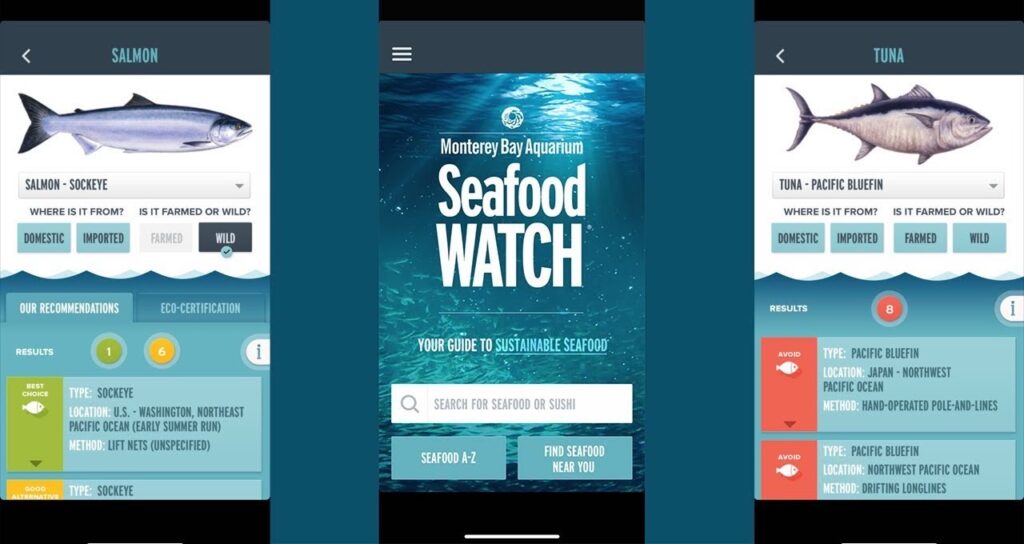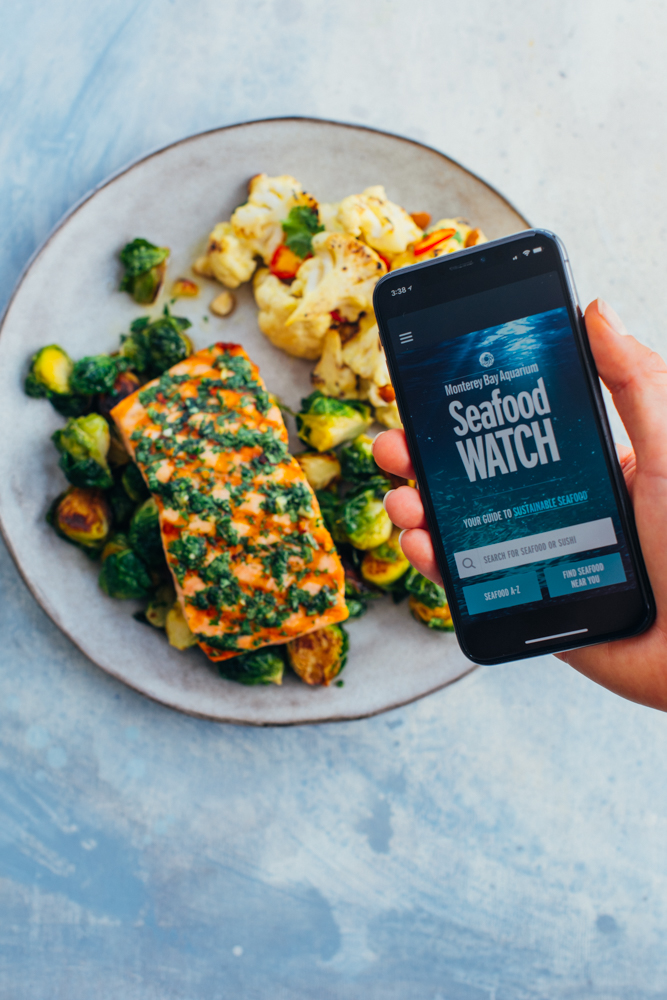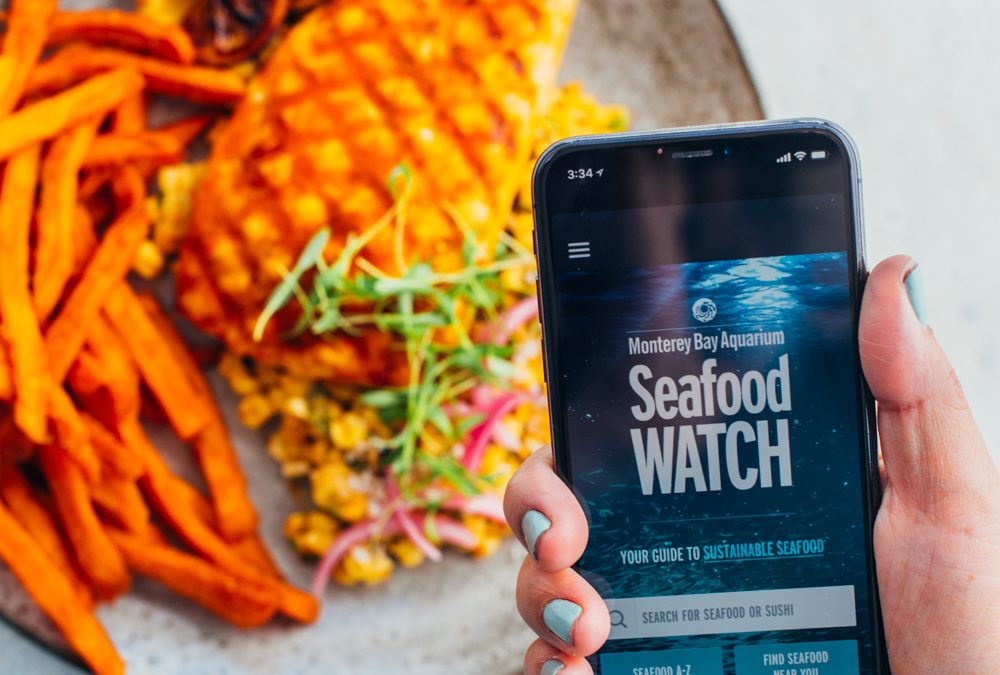Whether it’s shrimp, salmon, or any other species from the water, knowing where your seafood came from and if it’s a sustainable, ocean-friendly choice can certainly feel both daunting and frustrating. I cannot tell you how many times I’ve been at the grocery store and wondered why there wasn’t more information available to help me.
There are so many fisheries, improvement projects, and farms all over the world, each with a unique set of specific characteristics. Unfortunately, more than half of them are completely undocumented.
By law, the only information that has to be given to us in the United States is the species and the country of origin – that’s it. Nearly 90% of fish and seafood in the U.S. is imported, lengthening the supply chain and muddling traceability even further.
Thankfully, there are consumer-friendly resources to help us. The Seafood Watch program was officially launched as part of the Monterey Bay Aquarium’s 15th anniversary in 1999. Their website is an excellent resource with recommendations that consider the fishery or farm, habitat, management, and other critical factors involved in each species.
How does their review process work? Their scientists research government reports, journal articles, and white papers and also contact fishery and fish farm experts. After a thorough evaluation, they apply a sustainability standard to develop an in-depth Seafood Watch assessment which is also reviewed by experts from academia, government, and the seafood industry.
I recommend downloading their Seafood Watch app so you can have it handy at the grocery store or before ordering in a restaurant (or while meal-planning at home!).

Using the app is really simple. Type in the seafood item on the first screen of the app, and they provide a recommendation for the species based on their assessment in an easy-to-understand “traffic light” system:
- Green means “Best Choice” – the type of seafood is well-managed and caught or farmed in ways that are ecologically sound.
- Yellow means proceed with caution or “Good Alternative” – these can be eaten, but you should be aware that there are concerns with how they’re caught or farmed.
- Red means “Avoid” – seafood that is overfished or caught or farmed in ways that harm other marine life or the environment.
Within each section, there is more detailed information depending upon how deep you want to dive in!
Remember that the key to protecting our oceans is to be as informed as possible. Be curious. Ask questions! Encourage your friends and family to do the same.
While seafood is not as simple as beef, chicken, or pork, the extra effort to trace your seafood is worth it. It will lead you to an understanding of the provenance of the fish and seafood on your plate and assure you that you are supporting only the most sustainable fishermen and water farmers – thereby protecting our oceans, waterways, and marine life for generations to come.


